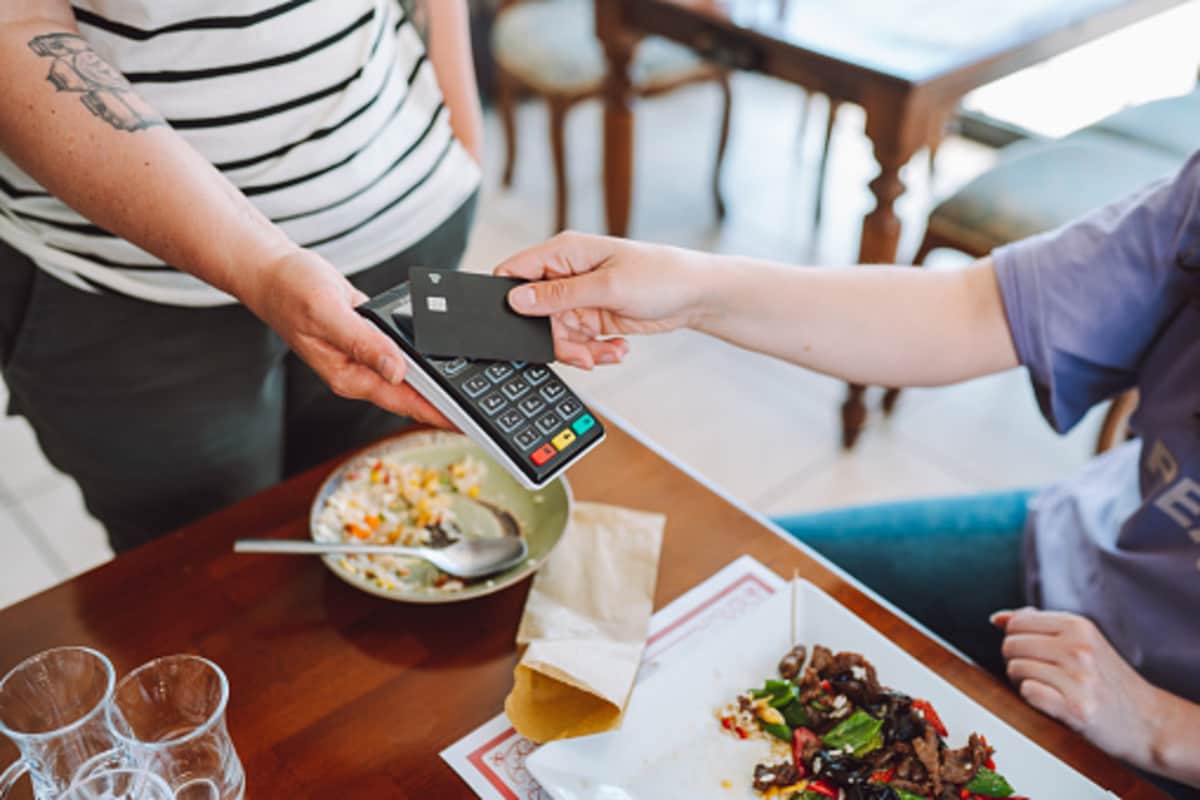Achieving success in restaurant entrepreneurship involves more than just delicious food. Strategic decisions about menu design, customer demographics, and pricing strategies also play critical roles. By understanding effective pricing strategies, restaurants can achieve a sustainable balance between profitability and memorable customer experience.
In this comprehensive guide, we will explore successful restaurant pricing strategies that can help you devise a revenue plan for your restaurant business. By understanding the art and science behind setting prices, you can ensure your bottom line is viable while your cuisine delights customers and entices them to return.
Introduction to restaurant pricing strategies
Setting the right prices for your restaurant involves considering factors such as competition, location, food and labor costs, and the dining experience you want to provide. Finding the right pricing strategy and setting the right prices for your restaurant can help ensure success in this highly competitive field.
How to calculate food costs
To successfully price your restaurant menu and ensure profitable margins, it’s essential to have a clear understanding of how to calculate food costs. Failing to accurately assess expenses can make it challenging to devise menus with appropriate pricing that generates adequate profit.
Calculating the cost of ingredients
To establish your menu pricing formula, the initial step is to calculate the cost of ingredients. You need to consider items used in every dish, including main ingredients such as meat or vegetables as well as spices and garnishes.
A few simple steps to follow are:
- Write down every ingredient needed for each menu item
- Outline the necessary amount per component
- Determine the total cost for each ingredient based on the amounts used
Calculating labor costs
Labor costs also play a significant role in overall expenses and should be incorporated into your restaurant’s pricing strategies.
To arrive at an accurate labor-cost-per-serving measure, you need to determine the hourly wage rates of everyone involved and calculate how long different team members spend on specific tasks. You need to consider all the steps that your team members have to go through, including everything from chopping vegetables to checking inventory.
To calculate labor costs per plate, add up the expenses and then divide by the number of servings created during that period. For example, if two cooks were paid $10 per hour and spent three hours making 100 servings ($60 in total), your labor costs would average out at 60 cents per plate.
If you want to learn how to handle revenue management and asses costs and pricing strategies for a hospitality business like a restaurant, there are plenty of great courses you can take.
Learn from the best in the business and master restaurant pricing strategies along with all other facets of running an exceptional venue.

Factors that influence menu prices

When devising your restaurant’s menu, several factors come into play. Let’s explore in more depth some vital elements influencing the decision-making process around pricing strategies.
Competition
What surrounds a restaurant can significantly affect its menu prices. For example, you wouldn’t charge premium rates if your restaurant is a casual eatery situated among fast food services in a shopping mall.
Carrying out a thorough analysis of competitors’ pricing can shed light on a suitable price range for what you offer. Look at restaurants with similar formats and menus in your locality and establishments targeting the same customer demographic. This will provide insight into what consumers are willing to pay for similar items.
Location
Similarly, location plays a key role in determining menu prices. It can dictate foot traffic and set consumer expectations regarding costs.
For instance, upscale localities often attract diners seeking higher-end dining experiences and more expensive offerings, while restaurants with breathtaking views can also command premiums. If you’re tucked away in a nondescript alleyway or located next to budget-friendly eateries, you may not attract the clientele willing to pay top-end prices.
Customer demographics
Identifying the consumer groups who come to your establishment, such as families with children, business professionals, or seniors, can provide key information on spending patterns and preferences.
Younger crowds may be more open to experimental cuisine but have less to spend. Customers in higher income brackets may have more conservative tastes, but have the means to splurge on luxury dining experiences. Meeting and exceeding diners’ expectations is key to building customer loyalty, which can ensure long-term success and can help you increase prices in the long term.
Menu pricing strategies
When setting pricing strategies for restaurants, there are four main approaches that stand out:
- cost plus pricing
- good, better, best pricing
- fixed pricing
- demand driven pricing
Each strategy has its own advantages and considerations to ensure effective implementation. We’ll look at the characteristics of them below.
Cost plus pricing
This involves calculating the expenses associated with preparing a dish, such as ingredients and utilities, then adding a desired profit margin. For example, if the total food costs for a burger equal $3 and you want to include a profit margin of 30%, you would set your menu price at approximately $4.
Good, better, best pricing
This encourages customers to compare various items from your own offerings rather than focusing on comparing prices with competitors.
You would provide three versions of a product (good, better, best) at different price points. The ‘best’ option should include additional features that justify its higher price while still appearing reasonable when compared to the ‘good’ option.
Fixed pricing
The fixed price approach is commonly seen in pre-set menus or tasting courses where multiple items are included for a single price. Customers often appreciate this method as they perceive it to offer more value. It caters to diverse palate preferences while providing an easily understandable total cost, eliminating the need to calculate individual component prices.
However, it’s important to regularly review fixed-price arrangements, especially when input costs can vary, such as seasonal ingredients or those subject to price fluctuations such as seafood.
Demand driven pricing
This means adjusting prices based on the patterns of customer demand. Popular items can be priced higher to capture their value, while less popular items can be competitively priced to encourage customers to try them, especially during slower times or off-peak seasons.
Learning how to handle different pricing strategies can be difficult. Studying a hospitality degree can help you get familiar with pricing and revenue management, as well as marketing and other skills to help build success.
Develop essential skills including restaurant pricing while benefiting from networking opportunities and practical real-world internships in our comprehensive program.

Using data to drive menu prices
In the age of big data, making informed decisions based on statistical analysis is becoming increasingly commonplace. Surprisingly, even restaurant menu pricing can benefit from this approach. By using available data, restaurants can fine-tune food pricing models to improve profitability.
Understanding customer behavior
More diners are taking the time to research menus online before choosing a restaurant. A study by TouchBistro shows 84% of diners now evaluate menus beforehand, a significant increase from 59% in 2017. To effectively use data, start by understanding your customers’ behaviors and preferences. This can involve analyzing popular orders, peak hours for specific items or how different customers react to pricing. The goal is to use this information to make flexible adjustments in your menu prices and achieve price optimization.
Leveraging market research
When determining the ideal pricing for a restaurant menu, market research can play a key role. Keeping an eye on your competition and what they charge for similar dishes is valuable in understanding industry trends and standards. This knowledge helps mitigate risks associated with setting prices that are either too ambitious or too low.
Analyzing cost breakdowns
Data specifically about cost breakdowns is vital when devising effective pricing strategies. Determine fixed and variable costs related directly or indirectly to each dish. These include ingredient costs, labor charges and utilities, among other overheads.
Implementing dynamic pricing
Dynamic pricing is a modern approach that replaces traditional fixed pricing methods. It takes into account factors such as seasonality and supply chain disruptions, which can cause prices to fluctuate. By analyzing historical data and predicting future trends, businesses can adopt a flexible pricing model based on market demand.
Using data-driven insights can significantly increase accuracy in setting appropriate prices to maximize profit margins.
Menu psychology and design tips for maximum profits
The art of setting menu food prices goes beyond mathematics. It also taps into psychology, aesthetics and even neurology. Understanding the underlying principles can help improve your restaurant pricing strategies.
Using photos, descriptions and boxes
High-quality photographs showcasing the appeal of a dish can capitalize on our primal hunger instinct, making items more tempting.
Equally crucial are articulate menu descriptions. Painting an appealing picture using sensory-filled language or detailed ingredient descriptions can sway diners towards these items.
Then there are boxes, also known as eye magnets. Placing an item in a box physically sets it apart from others and grabs attention quickly. Keep your boxes minimal – reserve them only for higher-margin dishes and remember this technique may not be appropriate in a sophisticated setting.
Using eye movement charts
Eye movement charts illuminate how diners navigate through menus, offering insights into strategically positioning items. The golden triangle rule in menu design is built around the following observations:
- Diners typically scan menus much like they read books — starting at the top left corner
- Their gaze then moves across to the top right
- It finally drifts down towards the center of the page
Placing your most profitable items strategically within this triangle improves visibility and can boost sales.
Common misconceptions about menu pricing
As with many strategies, there are a few misconceptions about menu pricing in the restaurant business. We debunk a few of the more common myths below.
Higher prices mean more profits
One of the most prevalent misconceptions is associating sheer high pricing with maximum profits. While higher menu food prices can increase revenue per dish sold, if your prices are astronomic compared to competitors’, it may drive customers away. It’s crucial to find the right balance between cost recuperation and customer attraction when setting up a menu price formula.
Low food costs justify lower menu prices
Some restaurant owners believe low food costs should reflect equally low menu prices immediately. This isn’t always viable, as it disregards other pivotal elements such as overheads, labor expenses and future inflation. A well thought-out restaurant menu pricing strategy accounts for all these factors along with the food costs to establish sustainable rates.
Price adjustment leads to customer loss
Many fear adjusting their menu prices will result in losing loyal customers. However, relaying increased costs to customers is an operational necessity rather than a choice in many cases. Transparent communication about why there has been an increase, such as due to ingredient scarcity or wage hikes, can help build and maintain trust between you and patrons.
Menu pricing tools
With so many factors to consider, embarking on the process of pricing your restaurant’s menu can seem a daunting task. One option to simplify this is using professional menu pricing tools. Some of the more prominent menu pricing software options include:
- MenuCalc: a popular choice among restaurateurs, it offers features that help analyze food costs and track nutritional information to determine optimal menu prices
- Recipe Costing Software: this platform provides detailed insights into restaurant food costs while focusing on inventory control
- PeachWorks: best known for its analytical approach, it can help streamline food costing in tune with market trends
Benefits of implementing a restaurant menu pricing strategy
Implementing a successful menu pricing strategy in your restaurant can have numerous advantages, such as:
- Profit maximization
- Enhanced customer experience
- Effective food cost management
- Insights into preferences
- Heightened competitive edge
If you want to learn how to implement pricing strategies for hospitality, you should focus on getting real-world experience along with focused studies in the industry. A hospitality degree course can help you bring all these benefits to your business.
Enhance your skills and open doors to a world of hospitality opportunities with our program that offers exclusive placements and mentorship with industry-leading professionals.

FAQs about menu pricing strategies
Let’s address some common inquiries that may help clarify any doubts you may have about restaurant pricing strategies.
Is demand driven pricing suitable for all restaurants?
It depends. Demand-driven pricing is a strategy that involves adjusting menu prices based on changes in demand or popularity. This approach works best for restaurants that have the flexibility and access to data needed to regularly modify food prices in response to market conditions.
How do customer demographics influence menu pricing?
Having a deep understanding of demographic elements such as age group, income levels, and lifestyle choices enables restaurateurs to more accurately gauge customers’ potential willingness to pay. This insights-driven approach allows you to offer dishes at prices that are attractive and to maximize patronage.
What determines restaurant food costs?
Restaurant food costs are typically influenced by factors including, but not limited to, the cost of ingredients, labor costs involved in preparation and serving, waste management expenses, and related overheads such as rent and utilities.
Conclusion
Successfully managing restaurant pricing strategies is critical to achieving success, whether you want to open your own restaurant or work in some of the top hospitality companies of the world. It’s important to note that these tactics are not fixed and need to be regularly adjusted and monitored to align with changing market conditions, food costs, and customer preferences.
Ultimately, whether you own an upscale fine dining establishment or a casual family bistro, the key to achieving a robust business lies in implementing creative yet practical pricing strategies for your restaurant menu. These approaches should aim to enhance customer appeal while also maintaining healthy profit margins.




